#azure openai developers
Explore tagged Tumblr posts
Text
Expert Azure OpenAI Developers for OpenAI Dynamics 365 & OpenAI Development Services
Looking to integrate AI into your business? Our Azure OpenAI developers specialize in creating AI-driven solutions within OpenAI Dynamics 365 to enhance automation, insights, and customer experiences. With our OpenAI development services, we help businesses leverage AI for chatbots, data analysis, and intelligent automation. Whether you're looking to implement AI-powered assistants, automate workflows, or enhance decision-making, we provide end-to-end solutions tailored to your needs. From consultation to deployment, our team ensures seamless integration of Azure OpenAI with Dynamics 365, unlocking new possibilities for your business.
0 notes
Text
AI-050: Develop Generative AI Solutions with Azure OpenAI Service
Azure OpenAI Service provides access to the powerful OpenAI large language models, such as GPT; the model behind the popular ChatGPT service. These models enable various natural language processing (NLP) solutions for understanding, conversing, and generating content. Users can access the service through REST API, SDK, and Azure OpenAI Studio. In this course, you'll learn how to provision the Azure OpenAI service, deploy models, and use them in generative AI applications.
0 notes
Text
What is the most awesome Microsoft product? Why?
The “most awesome” Microsoft product depends on your needs, but here are some top contenders and why they stand out:
Top Microsoft Products and Their Awesome Features
1. Microsoft Excel
Why? It’s the ultimate tool for data analysis, automation (with Power Query & VBA), and visualization (Power Pivot, PivotTables).
Game-changer feature: Excel’s Power Query and dynamic arrays revolutionized how users clean and analyze data.
2. Visual Studio Code (VS Code)
Why? A lightweight, free, and extensible code editor loved by developers.
Game-changer feature: Its extensions marketplace (e.g., GitHub Copilot, Docker, Python support) makes it indispensable for devs.
3. Windows Subsystem for Linux (WSL)
Why? Lets you run a full Linux kernel inside Windows—perfect for developers.
Game-changer feature: WSL 2 with GPU acceleration and Docker support bridges the gap between Windows and Linux.
4. Azure (Microsoft Cloud)
Why? A powerhouse for AI, cloud computing, and enterprise solutions.
Game-changer feature: Azure OpenAI Service (GPT-4 integration) and AI-driven analytics make it a leader in cloud tech.
5. Microsoft Power BI
Why? Dominates business intelligence with intuitive dashboards and AI insights.
Game-changer feature: Natural language Q&A lets users ask data questions in plain English.
Honorable Mentions:
GitHub (owned by Microsoft) – The #1 platform for developers.
Microsoft Teams – Revolutionized remote work with deep Office 365 integration.
Xbox Game Pass – Netflix-style gaming with cloud streaming.
Final Verdict?
If you’re a developer, VS Code or WSL is unbeatable. If you’re into data, Excel or Power BI wins. For cutting-edge cloud/AI, Azure is king.
What’s your favorite?
If you need any Microsoft products, such as Windows , Office , Visual Studio, or Server , you can go and get it from our online store keyingo.com
9 notes
·
View notes
Text
"Welcome to the AI trough of disillusionment"
"When the chief executive of a large tech firm based in San Francisco shares a drink with the bosses of his Fortune 500 clients, he often hears a similar message. “They’re frustrated and disappointed. They say: ‘I don’t know why it’s taking so long. I’ve spent money on this. It’s not happening’”.
"For many companies, excitement over the promise of generative artificial intelligence (AI) has given way to vexation over the difficulty of making productive use of the technology. According to S&P Global, a data provider, the share of companies abandoning most of their generative-AI pilot projects has risen to 42%, up from 17% last year. The boss of Klarna, a Swedish buy-now, pay-later provider, recently admitted that he went too far in using the technology to slash customer-service jobs, and is now rehiring humans for the roles."
"Consumers, for their part, continue to enthusiastically embrace generative AI. [Really?] Sam Altman, the boss of OpenAI, recently said that its ChatGPT bot was being used by some 800m people a week, twice as many as in February. Some already regularly turn to the technology at work. Yet generative AI’s ["]transformative potential["] will be realised only if a broad swathe of companies systematically embed it into their products and operations. Faced with sluggish progress, many bosses are sliding into the “trough of disillusionment”, says John Lovelock of Gartner, referring to the stage in the consultancy’s famed “hype cycle” that comes after the euphoria generated by a new technology.
"This poses a problem for the so-called hyperscalers—Alphabet, Amazon, Microsoft and Meta—that are still pouring vast sums into building the infrastructure underpinning AI. According to Pierre Ferragu of New Street Research, their combined capital expenditures are on course to rise from 12% of revenues a decade ago to 28% this year. Will they be able to generate healthy enough returns to justify the splurge? [I'd guess not.]
"Companies are struggling to make use of generative AI for many reasons. Their data troves are often siloed and trapped in archaic it systems. Many experience difficulties hiring the technical talent needed. And however much potential they see in the technology, bosses know they have brands to protect, which means minimising the risk that a bot will make a damaging mistake or expose them to privacy violations or data breaches.
"Meanwhile, the tech giants continue to preach AI’s potential. [Of course.] Their evangelism was on full display this week during the annual developer conferences of Microsoft and Alphabet’s Google. Satya Nadella and Sundar Pichai, their respective bosses, talked excitedly about a “platform shift” and the emergence of an “agentic web” populated by semi-autonomous AI agents interacting with one another on behalf of their human masters. [Jesus christ. Why? Who benefits from that? Why would anyone want that? What's the point of using the Internet if it's all just AIs pretending to be people? Goddamn billionaires.]
"The two tech bosses highlighted how AI models are getting better, faster, cheaper and more widely available. At one point Elon Musk announced to Microsoft’s crowd via video link that xAI, his AI lab, would be making its Grok models available on the tech giant’s Azure cloud service (shortly after Mr Altman, his nemesis, used the same medium to tout the benefits of OpenAI’s deep relationship with Microsoft). [Nobody wanted Microsoft to pivot to the cloud.] Messrs Nadella and Pichai both talked up a new measure—the number of tokens processed in generative-AI models—to demonstrate booming usage. [So now they're fiddling with the numbers to make them look better.
"Fuddy-duddy measures of business success, such as sales or profit, were not in focus. For now, the meagre cloud revenues Alphabet, Amazon and Microsoft are making from AI, relative to the magnitude of their investments, come mostly from AI labs and startups, some of which are bankrolled by the giants themselves.
"Still, as Mr Lovelock of Gartner argues, much of the benefit of the technology for the hyperscalers will come from applying it to their own products and operations. At its event, Google announced that it will launch a more conversational “AI mode” for its search engine, powered by its Gemini models. It says that the AI summaries that now appear alongside its search results are already used by more than 1.5bn people each month. [I'd imagine this is giving a generous definition of 'used'. The AI overviews spawn on basically every search - that doesn't mean everyone's using them. Although, probably, a lot of people are.] Google has also introduced generative AI into its ad business [so now the ads are even less appealing], to help companies create content and manage their campaigns. Meta, which does not sell cloud computing, has weaved the technology into its ad business using its open-source Llama models. Microsoft has embedded AI into its suite of workplace apps and its coding platform, Github. Amazon has applied the technology in its e-commerce business to improve product recommendations and optimise logistics. AI may also allow the tech giants to cut programming jobs. This month Microsoft laid off 6,000 workers, many of whom were reportedly software engineers. [That's going to come back to bite you. The logistics is a valid application, but not the whole 'replacing programmers with AI' bit. Better get ready for the bugs!]
"These efforts, if successful, may even encourage other companies to keep experimenting with the technology until they, too, can make it work. Troughs, after all, have two sides; next in Gartner’s cycle comes the “slope of enlightenment”, which sounds much more enjoyable. At that point, companies that have underinvested in AI may come to regret it. [I doubt it.] The cost of falling behind is already clear at Apple, which was slower than its fellow tech giants to embrace generative AI. It has flubbed the introduction of a souped-up version of its voice assistant Siri, rebuilt around the technology. The new bot is so bug-ridden its rollout has been postponed.
"Mr Lovelock’s bet is that the trough will last until the end of next year. In the meantime, the hyperscalers have work to do. Kevin Scott, Microsoft’s chief technology officer, said this week that for AI agents to live up to their promise, serious work needs to be done on memory, so that they can recall past interactions. The web also needs new protocols to help agents gain access to various data streams. [What an ominous way to phrase that.] Microsoft has now signed up to an open-source one called Model Context Protocol, launched in November by Anthropic, another AI lab, joining Amazon, Google and OpenAI.
"Many companies say that what they need most is not cleverer AI models, but more ways to make the technology useful. Mr Scott calls this the “capability overhang.” He and Anthropic’s co-founder Dario Amodei used the Microsoft conference to urge users to think big and keep the faith. [Yeah, because there's no actual proof this helps. Except in medicine and science.] “Don’t look away,” said Mr Amodei. “Don’t blink.” ■"
3 notes
·
View notes
Text
AI Agent Development: How to Create Intelligent Virtual Assistants for Business Success
In today's digital landscape, businesses are increasingly turning to AI-powered virtual assistants to streamline operations, enhance customer service, and boost productivity. AI agent development is at the forefront of this transformation, enabling companies to create intelligent, responsive, and highly efficient virtual assistants. In this blog, we will explore how to develop AI agents and leverage them for business success.

Understanding AI Agents and Virtual Assistants
AI agents, or intelligent virtual assistants, are software programs that use artificial intelligence, machine learning, and natural language processing (NLP) to interact with users, automate tasks, and make decisions. These agents can be deployed across various platforms, including websites, mobile apps, and messaging applications, to improve customer engagement and operational efficiency.
Key Features of AI Agents
Natural Language Processing (NLP): Enables the assistant to understand and process human language.
Machine Learning (ML): Allows the assistant to improve over time based on user interactions.
Conversational AI: Facilitates human-like interactions.
Task Automation: Handles repetitive tasks like answering FAQs, scheduling appointments, and processing orders.
Integration Capabilities: Connects with CRM, ERP, and other business tools for seamless operations.
Steps to Develop an AI Virtual Assistant
1. Define Business Objectives
Before developing an AI agent, it is crucial to identify the business goals it will serve. Whether it's improving customer support, automating sales inquiries, or handling HR tasks, a well-defined purpose ensures the assistant aligns with organizational needs.
2. Choose the Right AI Technologies
Selecting the right technology stack is essential for building a powerful AI agent. Key technologies include:
NLP frameworks: OpenAI's GPT, Google's Dialogflow, or Rasa.
Machine Learning Platforms: TensorFlow, PyTorch, or Scikit-learn.
Speech Recognition: Amazon Lex, IBM Watson, or Microsoft Azure Speech.
Cloud Services: AWS, Google Cloud, or Microsoft Azure.
3. Design the Conversation Flow
A well-structured conversation flow is crucial for user experience. Define intents (what the user wants) and responses to ensure the AI assistant provides accurate and helpful information. Tools like chatbot builders or decision trees help streamline this process.
4. Train the AI Model
Training an AI assistant involves feeding it with relevant datasets to improve accuracy. This may include:
Supervised Learning: Using labeled datasets for training.
Reinforcement Learning: Allowing the assistant to learn from interactions.
Continuous Learning: Updating models based on user feedback and new data.
5. Test and Optimize
Before deployment, rigorous testing is essential to refine the AI assistant's performance. Conduct:
User Testing: To evaluate usability and responsiveness.
A/B Testing: To compare different versions for effectiveness.
Performance Analysis: To measure speed, accuracy, and reliability.
6. Deploy and Monitor
Once the AI assistant is live, continuous monitoring and optimization are necessary to enhance user experience. Use analytics to track interactions, identify issues, and implement improvements over time.
Benefits of AI Virtual Assistants for Businesses
1. Enhanced Customer Service
AI-powered virtual assistants provide 24/7 support, instantly responding to customer queries and reducing response times.
2. Increased Efficiency
By automating repetitive tasks, businesses can save time and resources, allowing employees to focus on higher-value tasks.
3. Cost Savings
AI assistants reduce the need for large customer support teams, leading to significant cost reductions.
4. Scalability
Unlike human agents, AI assistants can handle multiple conversations simultaneously, making them highly scalable solutions.
5. Data-Driven Insights
AI assistants gather valuable data on customer behavior and preferences, enabling businesses to make informed decisions.
Future Trends in AI Agent Development
1. Hyper-Personalization
AI assistants will leverage deep learning to offer more personalized interactions based on user history and preferences.
2. Voice and Multimodal AI
The integration of voice recognition and visual processing will make AI assistants more interactive and intuitive.
3. Emotional AI
Advancements in AI will enable virtual assistants to detect and respond to human emotions for more empathetic interactions.
4. Autonomous AI Agents
Future AI agents will not only respond to queries but also proactively assist users by predicting their needs and taking independent actions.
Conclusion
AI agent development is transforming the way businesses interact with customers and streamline operations. By leveraging cutting-edge AI technologies, companies can create intelligent virtual assistants that enhance efficiency, reduce costs, and drive business success. As AI continues to evolve, embracing AI-powered assistants will be essential for staying competitive in the digital era.
5 notes
·
View notes
Text
Exploring DeepSeek and the Best AI Certifications to Boost Your Career
Understanding DeepSeek: A Rising AI Powerhouse
DeepSeek is an emerging player in the artificial intelligence (AI) landscape, specializing in large language models (LLMs) and cutting-edge AI research. As a significant competitor to OpenAI, Google DeepMind, and Anthropic, DeepSeek is pushing the boundaries of AI by developing powerful models tailored for natural language processing, generative AI, and real-world business applications.
With the AI revolution reshaping industries, professionals and students alike must stay ahead by acquiring recognized certifications that validate their skills and knowledge in AI, machine learning, and data science.
Why AI Certifications Matter
AI certifications offer several advantages, such as:
Enhanced Career Opportunities: Certifications validate your expertise and make you more attractive to employers.
Skill Development: Structured courses ensure you gain hands-on experience with AI tools and frameworks.
Higher Salary Potential: AI professionals with recognized certifications often command higher salaries than non-certified peers.
Networking Opportunities: Many AI certification programs connect you with industry experts and like-minded professionals.
Top AI Certifications to Consider
If you are looking to break into AI or upskill, consider the following AI certifications:
1. AICerts – AI Certification Authority
AICerts is a recognized certification body specializing in AI, machine learning, and data science.
It offers industry-recognized credentials that validate your AI proficiency.
Suitable for both beginners and advanced professionals.
2. Google Professional Machine Learning Engineer
Offered by Google Cloud, this certification demonstrates expertise in designing, building, and productionizing machine learning models.
Best for those who work with TensorFlow and Google Cloud AI tools.
3. IBM AI Engineering Professional Certificate
Covers deep learning, machine learning, and AI concepts.
Hands-on projects with TensorFlow, PyTorch, and SciKit-Learn.
4. Microsoft Certified: Azure AI Engineer Associate
Designed for professionals using Azure AI services to develop AI solutions.
Covers cognitive services, machine learning models, and NLP applications.
5. DeepLearning.AI TensorFlow Developer Certificate
Best for those looking to specialize in TensorFlow-based AI development.
Ideal for deep learning practitioners.
6. AWS Certified Machine Learning – Specialty
Focuses on AI and ML applications in AWS environments.
Includes model tuning, data engineering, and deep learning concepts.
7. MIT Professional Certificate in Machine Learning & Artificial Intelligence
A rigorous program by MIT covering AI fundamentals, neural networks, and deep learning.
Ideal for professionals aiming for academic and research-based AI careers.
Choosing the Right AI Certification
Selecting the right certification depends on your career goals, experience level, and preferred AI ecosystem (Google Cloud, AWS, or Azure). If you are a beginner, starting with AICerts, IBM, or DeepLearning.AI is recommended. For professionals looking for specialization, cloud-based AI certifications like Google, AWS, or Microsoft are ideal.
With AI shaping the future, staying certified and skilled will give you a competitive edge in the job market. Invest in your learning today and take your AI career to the next leve
3 notes
·
View notes
Text
Brazil Adopts OpenAI for Legal Efficiency Amid Rising Court Costs
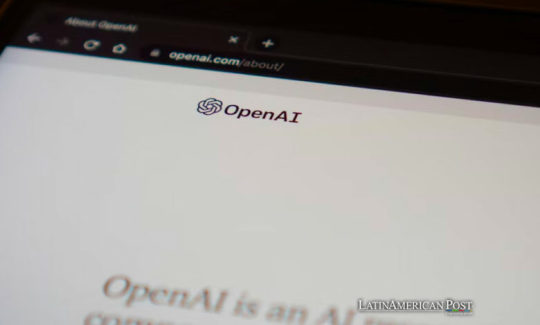
Brazil’s government is partnering with OpenAI to enhance the efficiency of its legal system using artificial intelligence. This initiative aims to mitigate the escalating costs of court-ordered debt payments, which have significantly impacted the federal budget.
Brazil’s government has taken a significant step towards modernizing its legal system by partnering with OpenAI to implement artificial intelligence (AI) solutions for screening and analyzing thousands of lawsuits. This initiative aims to prevent costly court losses straining the federal budget. The AI service will flag lawsuits that require government intervention before final decisions are made, helping to map trends and potential action areas for the solicitor general’s office (AGU), Reuters reported.
Microsoft will provide the AI services through its Azure cloud-computing platform, using technology developed by ChatGPT creator OpenAI. The financial details of the agreement between Brazil and OpenAI were not disclosed.
Continue reading.
#brazil#brazilian politics#politics#artificial intelligence#man i am not looking forward at all to the upcoming reports of biases reproduced in the AI-powered lawsuit results 🙃#mod nise da silveira#image description in alt
5 notes
·
View notes
Text
9 Best AI Chatbots
Smartest AI Chatbots in 2023
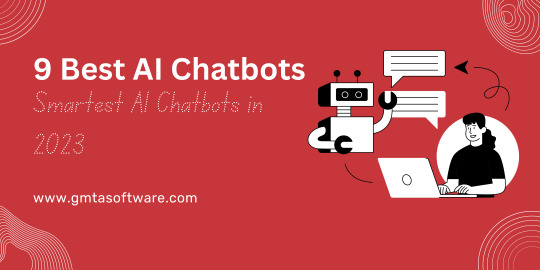
Chatbots have become one of the most important advances in the constantly evolving field of artificial intelligence (AI). These virtual assistants are made to converse with users in natural language and provide customized experiences in a variety of industries. As 2023 approaches, AI chatbots’ capabilities have advanced to new levels, and their use cases are becoming more varied.
The nine most intelligent AI chatbots that are trending in 2023 will be covered in this blog:
1. GPT-4 Chatbot by OpenAI

OpenAI’s GPT-4 stands as a shining example of conversational AI prowess. With improved contextual understanding and human-like responses, GPT-4 has become a cornerstone for numerous applications, ranging from customer support to content creation. Its impressive language generation abilities and nuanced understanding of user queries make it an invaluable tool for businesses and individuals alike.
2. Google’s ChatGPT-X
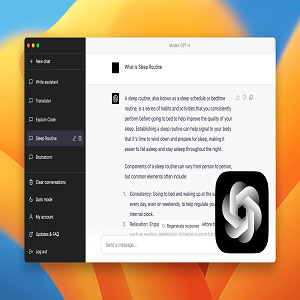
Google has also made significant strides in the AI chatbot domain with ChatGPT-X. This chatbot leverages Google’s vast resources and the power of GPT-3.5, allowing for more coherent and contextually relevant conversations. ChatGPT-X excels in aiding users with information retrieval, task management, and even providing companionship.
3. Amazon’s EchoBot

EchoBot, developed by Amazon, showcases the potential of AI chatbots in the realm of e-commerce. Integrated with Amazon’s shopping platform, EchoBot assists users in product recommendations, order tracking, and seamless shopping experiences. Its ability to understand user preferences and cater to their needs has elevated the online shopping journey.
4. IBM’s Watson Assistant

IBM’s Watson Assistant continues to impress with its AI-powered solutions for enterprises. In 2023, it has evolved to offer even more sophisticated natural language processing (NLP) capabilities. Watson Assistant empowers businesses to create tailored virtual assistants that streamline customer interactions, improve support systems, and enhance overall operational efficiency.
5. Microsoft’s Azure Bot Services

Microsoft’s Azure Bot Services has solidified its position as a top choice for businesses seeking AI-driven chatbot solutions. With enhanced language understanding and integration with Microsoft’s ecosystem, Azure Bot Services excels in diverse applications, including internal process automation, customer service, and software troubleshooting.
6. Facebook’s SocialBuddy

Facebook’s SocialBuddy is a testament to the integration of AI chatbots in social media platforms. Designed to facilitate brand-consumer interactions, SocialBuddy assists businesses in managing customer inquiries, feedback, and engagement. Its sentiment analysis capabilities contribute to personalized responses that resonate with users on a deeper level.
7. Siri 2.0 by Apple

Apple’s Siri has been a household name since its inception, and in 2023, Siri 2.0 takes virtual assistance to new heights. With advancements in speech recognition and context-awareness, Siri 2.0 provides users with a more intuitive and seamless experience across their Apple devices. From setting reminders to controlling smart home devices, Siri remains a frontrunner in the AI assistant landscape.
8. Samsung’s Bixby
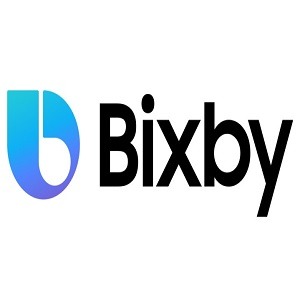
Samsung’s Bixby has matured into a comprehensive AI assistant that caters to users’ daily needs. Its integration with Samsung’s ecosystem empowers users to control devices, manage schedules, and access relevant information effortlessly. Bixby’s multi-modal capabilities, combining voice, text, and touch interactions, offer a well-rounded and user-friendly experience.
9. Salesforce’s ServiceBot
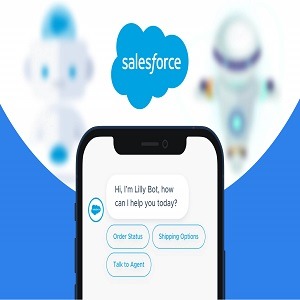
In the realm of customer relationship management (CRM), Salesforce’s ServiceBot shines brightly. Its advanced AI-driven chat capabilities enable businesses to provide exceptional customer support, personalized recommendations, and proactive issue resolution. ServiceBot’s integration with Salesforce’s CRM platform ensures a seamless transition between customer interactions and data management.
The year 2023 has witnessed the chatbot landscape evolving into a realm of boundless possibilities. The nine AI chatbots mentioned above represent a diverse range of applications, from customer support to social interactions, and from e-commerce to enterprise solutions.
These smart AI chatbots are not only changing the way businesses engage with customers but also enhancing individual experiences across various platforms.
As AI continues to advance, we can only expect these chatbots to become even smarter, more intuitive, and more integrated into our daily lives. Whether it’s streamlining business processes or providing personalized recommendations, AI chatbots are undoubtedly here to stay, making our interactions with technology more seamless and human-like than ever before.
1 note
·
View note
Text
Tracking Large Language Models (LLM) with MLflow : A Complete Guide
New Post has been published on https://thedigitalinsider.com/tracking-large-language-models-llm-with-mlflow-a-complete-guide/
Tracking Large Language Models (LLM) with MLflow : A Complete Guide
As Large Language Models (LLMs) grow in complexity and scale, tracking their performance, experiments, and deployments becomes increasingly challenging. This is where MLflow comes in – providing a comprehensive platform for managing the entire lifecycle of machine learning models, including LLMs.
In this in-depth guide, we’ll explore how to leverage MLflow for tracking, evaluating, and deploying LLMs. We’ll cover everything from setting up your environment to advanced evaluation techniques, with plenty of code examples and best practices along the way.
Functionality of MLflow in Large Language Models (LLMs)
MLflow has become a pivotal tool in the machine learning and data science community, especially for managing the lifecycle of machine learning models. When it comes to Large Language Models (LLMs), MLflow offers a robust suite of tools that significantly streamline the process of developing, tracking, evaluating, and deploying these models. Here’s an overview of how MLflow functions within the LLM space and the benefits it provides to engineers and data scientists.
Tracking and Managing LLM Interactions
MLflow’s LLM tracking system is an enhancement of its existing tracking capabilities, tailored to the unique needs of LLMs. It allows for comprehensive tracking of model interactions, including the following key aspects:
Parameters: Logging key-value pairs that detail the input parameters for the LLM, such as model-specific parameters like top_k and temperature. This provides context and configuration for each run, ensuring that all aspects of the model’s configuration are captured.
Metrics: Quantitative measures that provide insights into the performance and accuracy of the LLM. These can be updated dynamically as the run progresses, offering real-time or post-process insights.
Predictions: Capturing the inputs sent to the LLM and the corresponding outputs, which are stored as artifacts in a structured format for easy retrieval and analysis.
Artifacts: Beyond predictions, MLflow can store various output files such as visualizations, serialized models, and structured data files, allowing for detailed documentation and analysis of the model’s performance.
This structured approach ensures that all interactions with the LLM are meticulously recorded, providing a comprehensive lineage and quality tracking for text-generating models.
Evaluation of LLMs
Evaluating LLMs presents unique challenges due to their generative nature and the lack of a single ground truth. MLflow simplifies this with specialized evaluation tools designed for LLMs. Key features include:
Versatile Model Evaluation: Supports evaluating various types of LLMs, whether it’s an MLflow pyfunc model, a URI pointing to a registered MLflow model, or any Python callable representing your model.
Comprehensive Metrics: Offers a range of metrics tailored for LLM evaluation, including both SaaS model-dependent metrics (e.g., answer relevance) and function-based metrics (e.g., ROUGE, Flesch Kincaid).
Predefined Metric Collections: Depending on the use case, such as question-answering or text-summarization, MLflow provides predefined metrics to simplify the evaluation process.
Custom Metric Creation: Allows users to define and implement custom metrics to suit specific evaluation needs, enhancing the flexibility and depth of model evaluation.
Evaluation with Static Datasets: Enables evaluation of static datasets without specifying a model, which is useful for quick assessments without rerunning model inference.
Deployment and Integration
MLflow also supports seamless deployment and integration of LLMs:
MLflow Deployments Server: Acts as a unified interface for interacting with multiple LLM providers. It simplifies integrations, manages credentials securely, and offers a consistent API experience. This server supports a range of foundational models from popular SaaS vendors as well as self-hosted models.
Unified Endpoint: Facilitates easy switching between providers without code changes, minimizing downtime and enhancing flexibility.
Integrated Results View: Provides comprehensive evaluation results, which can be accessed directly in the code or through the MLflow UI for detailed analysis.
MLflow is a comprehensive suite of tools and integrations makes it an invaluable asset for engineers and data scientists working with advanced NLP models.
Setting Up Your Environment
Before we dive into tracking LLMs with MLflow, let’s set up our development environment. We’ll need to install MLflow and several other key libraries:
pip install mlflow>=2.8.1 pip install openai pip install chromadb==0.4.15 pip install langchain==0.0.348 pip install tiktoken pip install 'mlflow[genai]' pip install databricks-sdk --upgrade
After installation, it’s a good practice to restart your Python environment to ensure all libraries are properly loaded. In a Jupyter notebook, you can use:
import mlflow import chromadb print(f"MLflow version: mlflow.__version__") print(f"ChromaDB version: chromadb.__version__")
This will confirm the versions of key libraries we’ll be using.
Understanding MLflow’s LLM Tracking Capabilities
MLflow’s LLM tracking system builds upon its existing tracking capabilities, adding features specifically designed for the unique aspects of LLMs. Let’s break down the key components:
Runs and Experiments
In MLflow, a “run” represents a single execution of your model code, while an “experiment” is a collection of related runs. For LLMs, a run might represent a single query or a batch of prompts processed by the model.
Key Tracking Components
Parameters: These are input configurations for your LLM, such as temperature, top_k, or max_tokens. You can log these using mlflow.log_param() or mlflow.log_params().
Metrics: Quantitative measures of your LLM’s performance, like accuracy, latency, or custom scores. Use mlflow.log_metric() or mlflow.log_metrics() to track these.
Predictions: For LLMs, it’s crucial to log both the input prompts and the model’s outputs. MLflow stores these as artifacts in CSV format using mlflow.log_table().
Artifacts: Any additional files or data related to your LLM run, such as model checkpoints, visualizations, or dataset samples. Use mlflow.log_artifact() to store these.
Let’s look at a basic example of logging an LLM run:
This example demonstrates logging parameters, metrics, and the input/output as a table artifact.
import mlflow import openai def query_llm(prompt, max_tokens=100): response = openai.Completion.create( engine="text-davinci-002", prompt=prompt, max_tokens=max_tokens ) return response.choices[0].text.strip() with mlflow.start_run(): prompt = "Explain the concept of machine learning in simple terms." # Log parameters mlflow.log_param("model", "text-davinci-002") mlflow.log_param("max_tokens", 100) # Query the LLM and log the result result = query_llm(prompt) mlflow.log_metric("response_length", len(result)) # Log the prompt and response mlflow.log_table("prompt_responses", "prompt": [prompt], "response": [result]) print(f"Response: result")
Deploying LLMs with MLflow
MLflow provides powerful capabilities for deploying LLMs, making it easier to serve your models in production environments. Let’s explore how to deploy an LLM using MLflow’s deployment features.
Creating an Endpoint
First, we’ll create an endpoint for our LLM using MLflow’s deployment client:
import mlflow from mlflow.deployments import get_deploy_client # Initialize the deployment client client = get_deploy_client("databricks") # Define the endpoint configuration endpoint_name = "llm-endpoint" endpoint_config = "served_entities": [ "name": "gpt-model", "external_model": "name": "gpt-3.5-turbo", "provider": "openai", "task": "llm/v1/completions", "openai_config": "openai_api_type": "azure", "openai_api_key": "secrets/scope/openai_api_key", "openai_api_base": "secrets/scope/openai_api_base", "openai_deployment_name": "gpt-35-turbo", "openai_api_version": "2023-05-15", , , ], # Create the endpoint client.create_endpoint(name=endpoint_name, config=endpoint_config)
This code sets up an endpoint for a GPT-3.5-turbo model using Azure OpenAI. Note the use of Databricks secrets for secure API key management.
Testing the Endpoint
Once the endpoint is created, we can test it:
<div class="relative flex flex-col rounded-lg"> response = client.predict( endpoint=endpoint_name, inputs="prompt": "Explain the concept of neural networks briefly.","max_tokens": 100,,) print(response)
This will send a prompt to our deployed model and return the generated response.
Evaluating LLMs with MLflow
Evaluation is crucial for understanding the performance and behavior of your LLMs. MLflow provides comprehensive tools for evaluating LLMs, including both built-in and custom metrics.
Preparing Your LLM for Evaluation
To evaluate your LLM with mlflow.evaluate(), your model needs to be in one of these forms:
An mlflow.pyfunc.PyFuncModel instance or a URI pointing to a logged MLflow model.
A Python function that takes string inputs and outputs a single string.
An MLflow Deployments endpoint URI.
Set model=None and include model outputs in the evaluation data.
Let’s look at an example using a logged MLflow model:
import mlflow import openai with mlflow.start_run(): system_prompt = "Answer the following question concisely." logged_model_info = mlflow.openai.log_model( model="gpt-3.5-turbo", task=openai.chat.completions, artifact_path="model", messages=[ "role": "system", "content": system_prompt, "role": "user", "content": "question", ], ) # Prepare evaluation data eval_data = pd.DataFrame( "question": ["What is machine learning?", "Explain neural networks."], "ground_truth": [ "Machine learning is a subset of AI that enables systems to learn and improve from experience without explicit programming.", "Neural networks are computing systems inspired by biological neural networks, consisting of interconnected nodes that process and transmit information." ] ) # Evaluate the model results = mlflow.evaluate( logged_model_info.model_uri, eval_data, targets="ground_truth", model_type="question-answering", ) print(f"Evaluation metrics: results.metrics")
This example logs an OpenAI model, prepares evaluation data, and then evaluates the model using MLflow’s built-in metrics for question-answering tasks.
Custom Evaluation Metrics
MLflow allows you to define custom metrics for LLM evaluation. Here’s an example of creating a custom metric for evaluating the professionalism of responses:
from mlflow.metrics.genai import EvaluationExample, make_genai_metric professionalism = make_genai_metric( name="professionalism", definition="Measure of formal and appropriate communication style.", grading_prompt=( "Score the professionalism of the answer on a scale of 0-4:n" "0: Extremely casual or inappropriaten" "1: Casual but respectfuln" "2: Moderately formaln" "3: Professional and appropriaten" "4: Highly formal and expertly crafted" ), examples=[ EvaluationExample( input="What is MLflow?", output="MLflow is like your friendly neighborhood toolkit for managing ML projects. It's super cool!", score=1, justification="The response is casual and uses informal language." ), EvaluationExample( input="What is MLflow?", output="MLflow is an open-source platform for the machine learning lifecycle, including experimentation, reproducibility, and deployment.", score=4, justification="The response is formal, concise, and professionally worded." ) ], model="openai:/gpt-3.5-turbo-16k", parameters="temperature": 0.0, aggregations=["mean", "variance"], greater_is_better=True, ) # Use the custom metric in evaluation results = mlflow.evaluate( logged_model_info.model_uri, eval_data, targets="ground_truth", model_type="question-answering", extra_metrics=[professionalism] ) print(f"Professionalism score: results.metrics['professionalism_mean']")
This custom metric uses GPT-3.5-turbo to score the professionalism of responses, demonstrating how you can leverage LLMs themselves for evaluation.
Advanced LLM Evaluation Techniques
As LLMs become more sophisticated, so do the techniques for evaluating them. Let’s explore some advanced evaluation methods using MLflow.
Retrieval-Augmented Generation (RAG) Evaluation
RAG systems combine the power of retrieval-based and generative models. Evaluating RAG systems requires assessing both the retrieval and generation components. Here’s how you can set up a RAG system and evaluate it using MLflow:
from langchain.document_loaders import WebBaseLoader from langchain.text_splitter import CharacterTextSplitter from langchain.embeddings import OpenAIEmbeddings from langchain.vectorstores import Chroma from langchain.chains import RetrievalQA from langchain.llms import OpenAI # Load and preprocess documents loader = WebBaseLoader(["https://mlflow.org/docs/latest/index.html"]) documents = loader.load() text_splitter = CharacterTextSplitter(chunk_size=1000, chunk_overlap=0) texts = text_splitter.split_documents(documents) # Create vector store embeddings = OpenAIEmbeddings() vectorstore = Chroma.from_documents(texts, embeddings) # Create RAG chain llm = OpenAI(temperature=0) qa_chain = RetrievalQA.from_chain_type( llm=llm, chain_type="stuff", retriever=vectorstore.as_retriever(), return_source_documents=True ) # Evaluation function def evaluate_rag(question): result = qa_chain("query": question) return result["result"], [doc.page_content for doc in result["source_documents"]] # Prepare evaluation data eval_questions = [ "What is MLflow?", "How does MLflow handle experiment tracking?", "What are the main components of MLflow?" ] # Evaluate using MLflow with mlflow.start_run(): for question in eval_questions: answer, sources = evaluate_rag(question) mlflow.log_param(f"question", question) mlflow.log_metric("num_sources", len(sources)) mlflow.log_text(answer, f"answer_question.txt") for i, source in enumerate(sources): mlflow.log_text(source, f"source_question_i.txt") # Log custom metrics mlflow.log_metric("avg_sources_per_question", sum(len(evaluate_rag(q)[1]) for q in eval_questions) / len(eval_questions))
This example sets up a RAG system using LangChain and Chroma, then evaluates it by logging questions, answers, retrieved sources, and custom metrics to MLflow.
The way you chunk your documents can significantly impact RAG performance. MLflow can help you evaluate different chunking strategies:
This script evaluates different combinations of chunk sizes, overlaps, and splitting methods, logging the results to MLflow for easy comparison.
MLflow provides various ways to visualize your LLM evaluation results. Here are some techniques:
You can create custom visualizations of your evaluation results using libraries like Matplotlib or Plotly, then log them as artifacts:
This function creates a line plot comparing a specific metric across multiple runs and logs it as an artifact.
#2023#ai#AI Tools 101#Analysis#API#approach#Artificial Intelligence#azure#azure openai#Behavior#code#col#Collections#communication#Community#comparison#complexity#comprehensive#computing#computing systems#content#credentials#custom metrics#data#data science#databricks#datasets#deploying#deployment#development
0 notes
Text
AI-050: Develop Generative AI Solutions with Azure OpenAI Service
Azure OpenAI Service provides access to the powerful OpenAI large language models, such as GPT; the model behind the popular ChatGPT service. These models enable various natural language processing (NLP) solutions for understanding, conversing, and generating content. Users can access the service through REST API, SDK, and Azure OpenAI Studio. In this course, you'll learn how to provision the Azure OpenAI service, deploy models, and use them in generative AI applications.
0 notes
Text
AI Infrastructure Market Empowering AI-Driven Drug Discovery and Development
The global AI infrastructure market was valued at USD 35.42 billion in 2023 and is projected to reach USD 223.45 billion by 2030, expanding at a CAGR of 30.4% from 2024 to 2030. AI infrastructure encompasses the hardware, software, and networking systems that support the development, deployment, and management of AI solutions.
Market growth is driven by the rising need for high-performance computing to process large datasets, increasing adoption of cloud-based AI platforms, and growing use of AI technologies across industries such as healthcare, finance, and manufacturing.

Key Market Insights:
North America led the market with a 38.4% revenue share in 2023, driven by the presence of major cloud providers like AWS, Microsoft Azure, and Google Cloud.
By component, the hardware segment held the largest share at 63.3% in 2023, supported by the demand for advanced processors and AI-specific chips.
By technology, machine learning dominated with 58.4% market share in 2023, fueled by data growth, algorithm advancements, and improvements in GPUs and AI hardware.
By application, training accounted for 71.4% of the market in 2023, reflecting increased data generation and the need for extensive model development.
By deployment, on-premise solutions held 50.0% share in 2023, driven by requirements for data security, control, and low-latency performance.
By end-user, cloud service providers (CSPs) led with 47.4% market share in 2023, supported by surging data from IoT, social media, and online activity fueling AI model development.
Order a free sample PDF of the AI Infrastructure Market Intelligence Study, published by Grand View Research.
Market Size & Forecast
2023 Market Size: USD 35.42 Billion
2030 Projected Market Size: USD 223.45 Billion
CAGR (2024-2030): 30.4%
North America: Largest market in 2023
Asia Pacific: Fastest growing market
Key Companies & Market Share Insights
Some of the key players in the global AI infrastructure market include Google Cloud LLC, OpenAI, and Alibaba Cloud.
Google LLC offers a wide range of AI infrastructure solutions through Google Cloud, designed for businesses, developers, and researchers. Its offerings include tools for machine learning, data analytics, AI infrastructure and computing, pre-trained APIs, and productivity platforms like Google Workspace, enabling scalable and efficient AI deployment.
Amazon Web Services (AWS) is a leading cloud provider offering a comprehensive set of AI and machine learning services. Key products include Amazon SageMaker for model development, and specialized tools like AWS DeepLens, Rekognition, Lex, Polly, Transcribe, Translate, and Comprehend. AWS supports high-performance computing with flexible GPU and CPU instances tailored for scalable AI workloads.
Let me know if you'd like the descriptions for OpenAI and Alibaba Cloud added or summarized as well.
Key Players
Google LLC
Nvidia Corporation
AIBrain
IBM
Microsoft
ConcertAI
Oracle
Salesforce, Inc.
Amazon Inc.
Alibaba Cloud
Explore Horizon Databook – The world's most expansive market intelligence platform developed by Grand View Research.
Conclusion
The AI infrastructure market is experiencing substantial growth, fueled by the increasing need for high-performance computing to handle extensive AI training and inference. This expansion is also driven by the rising adoption of cloud-based AI platforms and the growing demand for AI solutions across diverse industries such as healthcare, manufacturing, and finance. Key trends include significant regional market shares and the prevalence of on-premise deployments, alongside a robust demand for specialized hardware. Technological advancements, particularly in processing and connectivity, are further accelerating market development, influencing market concentration and industry consolidation.
0 notes
Text
How to Choose the Right Artificial Intelligence Course in Dubai for Your Career Goals?
Artificial Intelligence isn’t just trending it’s rewriting the rules across every industry. Dubai, with its aggressive tech ambitions and government-backed AI strategies, is positioning itself as one of the most promising AI hubs in the Middle East. Whether you’re looking to upskill, pivot careers, or build something of your own, now’s the time to get serious about AI.
But here’s the thing: with so many courses out there, choosing the right Artificial Intelligence course in Dubai isn’t about picking the flashiest marketing page or the lowest price. It’s about aligning the course with your career goals — and that’s what this guide is here to help you do.
Step 1: Define Why You’re Getting Into AI
Before you even look at a syllabus, you need to get clear on your intent.
Ask yourself:
Am I trying to become a Machine Learning or AI Engineer?
Do I want to apply AI in my domain (finance, healthcare, logistics, etc.)?
Am I switching careers or building on an existing tech background?
Do I want to eventually work in research or academia?
Is this about building a business with AI-powered tools?
Your “why” determines what kind of course you need — from technical bootcamps to application-focused programs or theory-heavy academic routes.
Step 2: Match Your Career Path to Course Type
Let’s break this down by career goal.
1. AI/ML Engineer
You need a code-intensive, math-focused course that includes:
Python, NumPy, pandas, scikit-learn
Machine learning models: regression, classification, clustering
Deep learning (CNNs, RNNs, transformers)
Deployment using Flask, Docker, cloud (AWS, Azure)
End-to-end projects and portfolio development
Best for: Engineers, developers, or computer science grads looking to specialize.
2. Data Scientist or Analyst
Look for a course that combines:
Python and data handling
Data visualization (Matplotlib, Seaborn, Power BI)
Exploratory Data Analysis (EDA)
Statistics + ML models
Business storytelling with AI
Best for: Analysts, Excel power users, or professionals aiming to turn data into decisions.
3. Domain Professionals (Finance, Healthcare, etc.)
You’re not trying to become a developer — you want to use AI to make better business decisions.
Look for:
Applied AI training
Tools like AutoML, no-code ML platforms
Case studies from your industry
Focus on ethics, explainability, and real-world constraints
Best for: Mid-career professionals or managers wanting to make their work AI-ready.
4. Academic/Research-Oriented
You’ll want a course that leans into:
Core mathematics: linear algebra, probability, calculus
Algorithm theory and derivations
Advanced neural networks, generative models, reinforcement learning
Research paper reading and writing
Mentorship from faculty or researchers
Best for: Master’s students, PhD aspirants, or those entering AI research.
5. Entrepreneurs & Product Leaders
You want to understand AI deeply enough to build products or lead teams. You need:
Overview of AI technologies
How to scope and build AI-powered apps
MVP development using LLMs, NLP, APIs
AI product strategy, ethical risks, and business models
Best for: Startup founders, tech PMs, or innovation heads.
Step 3: Evaluate the Curriculum (Don’t Settle for Buzzwords)
Avoid vague promises like “learn AI in 4 weeks” or “certified by global experts.” Instead, look at what’s actually taught.
A quality Artificial Intelligence course in Dubai should include:
Foundations: Python, statistics, linear algebra
Machine Learning: supervised & unsupervised learning
Deep Learning: CNNs, RNNs, transformers, LLMs
NLP: text classification, language models, chatbots
Computer Vision: image recognition, object detection
Deployment: Flask, Streamlit, Docker, cloud hosting
Capstone Projects: working on real-world datasets
Bonus if it includes:
Prompt engineering
Tools like OpenAI APIs, Hugging Face, or LangChain
Hands-on implementation of current-gen AI tools
If all you're doing is watching slides and running someone else’s code, you’re not learning — you're consuming.
Step 4: Choose the Right Format — Online, Offline, or Hybrid
Dubai offers all formats. What matters is what fits your lifestyle and learning needs.
❖ Offline (In-person classroom):
High accountability
Great for structured learning
Peer and instructor support
Ideal for beginners or career changers
❖ Online (Live or self-paced):
Flexible for working professionals
Works well if you’re disciplined
Live classes are better than pure self-paced
❖ Hybrid:
Attend some sessions offline, rest online
Great option if you're working or traveling often
If you're based in Dubai, classroom-based courses give you better networking, mentor access, and practical labs.
Step 5: Ask About Hands-On Projects
No employer cares about what you “watched.” They care about what you built.
Look for:
Projects after each module (not just one final project)
Case studies that mimic real business problems
Exposure to open datasets (Kaggle, UCI, government data)
Portfolio help: GitHub, LinkedIn profile, personal blog or demo
At least one capstone project should be end-to-end: data collection, preprocessing, modeling, evaluation, and deployment.
Why Boston Institute of Analytics Is Worth Considering in Dubai?
If you’re looking for a top-rated Artificial Intelligence course in Dubai, the Boston Institute of Analytics (BIA) is one of the most reliable choices.
What BIA brings to the table:
Globally recognized AI certification
In-person and hybrid learning options in Dubai
Industry-level curriculum built for real-world roles
Projects, capstone labs, and deployment training
Mentorship from experienced AI professionals
Placement support for job-ready learners
Whether you’re starting fresh, switching careers, or advancing into leadership, BIA helps you build real skills, not just stack up credentials.
Final Thoughts
Choosing the right Artificial Intelligence course in Dubai is not about who has the flashiest brochure. It’s about finding a course that:
✅ Matches your career path ✅ Offers deep, applied learning — not just concepts ✅ Has instructors who’ve done the work, not just taught it ✅ Includes real-world projects and portfolio support ✅ Helps you grow — whether that means landing a job, building a product, or applying AI in your own field
Dubai’s AI landscape is only getting bigger. The right course doesn’t just prepare you for today’s roles — it gives you the tools to lead tomorrow’s innovations.
#Best Data Science Courses in Dubai#Artificial Intelligence Course in Dubai#Data Scientist Course in Dubai#Machine Learning Course in Dubai
0 notes
Text
Looking to Integrate Generative AI into Your Workflow? Here's How Dataplatr Can Help
Integrating Generative AI into your workflow will be the best idea. From automating content generation to accelerating data analysis and enhancing customer experiences, Generative AI services are transforming how businesses operate. We specialize in delivering Generative AI consulting services tailored to your unique business needs. Whether you're just starting your AI journey or looking to optimize existing workflows, our team of experts ensures a seamless integration process backed by strategy, scalability, and security.
How Can Dataplatr’s Generative AI Consulting Services Help You Succeed?
We offer specialized generative AI consulting services that help businesses understand, design, and implement Gen AI use cases tailored to their specific needs. Our consultants assess your existing workflows, identify automation opportunities, and develop custom models or integrations using top platforms like OpenAI, Google, and Azure.
Generative AI Consulting that Fit Your Business Needs
Generative AI consulting focuses on personalization offering strategic assessments, solution architecture, model selection, prompt engineering, and deployment support. Whether you're in marketing, finance, customer support, or operations, we help you implement AI capabilities that bring real value.
Is Generative AI Integration Complex?
Our generative AI consulting simplifies the process and guides you through use case prioritization, data readiness, model selection, and integration. We also ensure your teams are equipped to work alongside AI by offering training and change management support.
Generative AI as a Service: Scalable, Flexible, Powerful
Looking for a plug-and-play solution? With our Generative AI as a Service offering, you gain access to enterprise-grade models without the infrastructure hassle. We provide APIs and platform integrations that make it easy to embed generative AI capabilities into your workflows securely and efficiently.
Start Your Generative AI Journey with Dataplatr Today
If you're ready to take the next step and integrate GenAI into your daily operations, Dataplatr is here to help. Our team of consultants and engineers makes the process simple, scalable, and successful. Let’s achieve productivity, and innovation with Generative AI consulting and implementation services customized for your business.
0 notes
Text
Driving Business Success with the Power of Azure Machine Learning
Azure Machine Learning is revolutionizing how businesses drive success through data. By transforming raw data into actionable insights, Azure ML enables you to uncover hidden trends and anticipate customer needs and empowers you to make proactive, data-driven decisions that fuel growth, instilling a sense of confidence and control.
With capabilities that streamline prompt engineering and accelerate the building of machine learning models, Azure ML provides the agility and scale to stay ahead in a competitive market. You can adapt and grow, unlocking new avenues for innovation, efficiency, and long-term success.
Azure Machine Learning empowers you with advanced analytics and simplifies complex AI processes, making predictive modeling more easily accessible than ever. By automating critical model creation and deployment aspects, Azure ML helps you rapidly iterate and scale your machine learning initiatives.
You can focus on strategic insights, allowing you to respond faster to market demands, optimize resource allocation, and precisely refine customer experiences. With Azure ML, businesses gain a reliable foundation for agile decision-making and a robust pathway to achieving measurable, data-driven success.
Azure Machine Learning Capabilities for AI and ML Development

1-Build Language Model–Based Applications
Azure Machine Learning offers a vast library of pre-trained foundation models from industry leaders like Microsoft, OpenAI Service, Hugging Face, and Meta within its unified model catalog. This expansive access to language models enables developers to seamlessly build powerful applications tailored to natural language processing (NLP), sentiment analysis, chatbots, and more. With these ready-to-deploy models, organizations can leverage the latest advancements in language AI, significantly reducing development time and resources while ensuring their applications are built on robust, cutting-edge technology.
2-Build Your Models
With Azure's no-code interface, businesses can create and customize machine learning models quickly and efficiently, even without extensive coding expertise. This user-friendly approach democratizes AI, allowing team members from various backgrounds to develop data-driven solutions that meet specific business needs. The drag-and-drop tools make it possible to explore, train, and fine-tune models effortlessly, accelerating the journey from concept to deployment and empowering companies to innovate faster than ever.
3-Built-in Security and Compliance
Azure Machine Learning is designed with robust, enterprise-grade security and compliance standards that ensure data privacy, protection, and adherence to global regulatory requirements. Whether handling sensitive customer data or proprietary business insights, organizations can trust Azure ML's built-in security protocols to safeguard their assets. This commitment to security minimizes risks and instills confidence, allowing businesses to focus on AI innovation without compromising compliance.
4-Streamline Machine Learning Tasks
Azure's automated machine learning capabilities simplify identifying the best classification models for various tasks, freeing teams from manually testing multiple algorithms. With its intelligent automation, Azure ML evaluates numerous model configurations, identifying the most effective options for specific use cases, whether for image recognition, customer segmentation, or predictive analytics. This streamlining of tasks allows businesses to harness AI-driven insights faster, boosting productivity and accelerating time-to-market for AI solutions.
5-Implement Responsible AI
Azure Machine Learning prioritizes transparency and accountability with its Responsible AI dashboard, which supports users in making informed, data-driven decisions. This powerful tool enables teams to assess model performance, evaluate fairness, and ensure AI outputs align with ethical standards and organizational values. By embedding Responsible AI practices, Azure empowers businesses to achieve their strategic goals, build trust, and uphold integrity, ensuring their AI solutions positively contribute to business and society.
Why Web Synergies?
Web Synergies stands out as a trusted partner in harnessing the full potential of Azure Machine Learning, empowering businesses to quickly turn complex data into valuable insights. With our deep domain expertise in AI and machine learning, we deliver tailored solutions that align with your unique business needs, helping you stay competitive in today's data-driven landscape.
Our commitment to responsible, sustainable, and secure AI practices means you can trust us to implement solutions that are not only powerful but also ethical and compliant. Partnering with Web Synergies means choosing a team dedicated to your long-term success, ensuring you maximize your investment in AI for measurable, impactful results.
0 notes
Text
Beyond the Headlines: What Microsoft’s AI Restructuring Reveals About the Mandatory “AI‑First” Strategy for Every Business

In today’s digital transformation race, Microsoft is no longer just participating—it’s setting the pace. The company's sweeping internal shifts offer more than headlines; they present a clear blueprint for every enterprise navigating an AI‑First future. For a deep dive into this transformation, check out the full analysis in What Microsoft’s AI Restructuring Reveals About the Mandatory ‘AI‑First’ Strategy for Every Business.
1. Microsoft’s $80 Billion AI Bet: A Signal to All
Microsoft’s massive AI investment—an estimated $80 billion in FY 2025—spans custom silicon, Azure expansion, OpenAI collaboration, and full-stack Copilot integration. But this isn’t just about capabilities—it’s a restructuring of the entire business model.
This shift has already led to the layoff of over 9,000 employees, with a clear message: repetitive tasks and traditional roles are being replaced by AI-powered functions. While some view this as aggressive, Microsoft sees it as essential for scaling innovation and productivity.
2. Automation as the Core Operating Principle
Internally, Microsoft is pursuing 95% automation of its software development processes. The target? Dramatic increases in code generation, testing, and deployment—powered by Agentic AI tools. This isn’t a trend. It’s a full-system upgrade. Teams are being restructured, layers of middle management reduced, and silos broken down to enable AI-enhanced workflows.
This AI-first approach echoes beyond engineering—sales, HR, and operations are all being reimagined with automation-first mindsets. Microsoft's culture is shifting from hierarchical decision-making to AI‑guided execution.
3. Rethinking Sales: From Pitch to Partnership
Nowhere is the AI restructuring more visible than in Microsoft’s go-to-market motion. Traditional sales roles are being replaced with AI-savvy solutions engineers, and new verticals—AI Business Solutions, Cloud & AI Platforms, and Security—now define territory boundaries.
AI isn’t a product anymore. It’s the value driver. Sales teams are expected to demonstrate AI outcomes rather than sell software. This transition reflects a larger enterprise trend: value is no longer about features—it’s about impact.
4. Embedding AI Across Every Product Layer
Microsoft’s Copilot is now central to its core products—Microsoft 365, Dynamics, and Azure. But this is just the beginning. The company's strategy is to make Copilot and generative AI not just assistants, but essential interfaces for every employee and customer.
Meanwhile, its internal CoreAI team, led by ex-Meta executive Jay Parikh, is building what insiders call an “AI-agent factory.” The vision? Reduce costs, standardize models, and integrate AI into every workflow at scale.
5. Why This Matters for Every Business
This is not just a Microsoft story. It’s a corporate wake-up call. If a global giant like Microsoft is restructuring entire departments and product lines around AI-first principles, what excuse does any business have to delay?
Research shows that over 60% of CEOs are already adopting AI for competitive advantage. Microsoft’s strategy provides a live case study on executing that vision: aggressive investment, deep internal realignment, and product redefinition.
6. Challenges Ahead: Culture, Ethics, and Talent
Of course, rapid change comes with risk. Mass layoffs may damage morale. Speedy Copilot rollouts have raised eyebrows about data privacy and hallucination risks. Talent gaps remain, especially in AI ethics and security. Microsoft’s journey proves that embracing AI must go hand-in-hand with responsible leadership.
Conclusion: The AI‑First Mandate Is Real
The takeaway is simple: AI-first isn’t a marketing term—it’s a business mandate. Microsoft is showing the world what it takes to operationalize that vision at scale. Every business leader—regardless of size—should be asking: Are we truly AI-first? Or just AI-aware?
0 notes